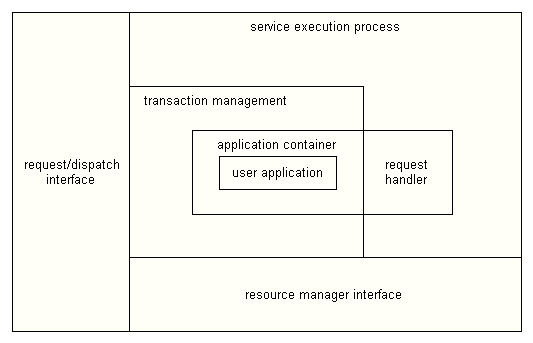The COBOL application providing a service runs inside a service execution process. An enterprise server can have a number of service execution processes. When you start a server, they all become available to process client requests. When a service execution process has finished processing a request, it becomes available again, to process another request.
The processing of a request proceeds as follows:
- A client request is received by the communications process and is scheduled for execution by being queued within the shared memory area.
- When one of the service execution processes becomes available, it starts processing the request: it calls the application container, which is the COBOL run-time system adapted to operate in the Server Enterprise Edition environment.
- The application container then calls a request handler to decode the received request. There is a Micro Focus request handler for each type of client request that Server Enterprise Edition can handle.
- Once the COBOL application has finished processing the request, the application container calls the request handler to map the output parameters into a form the client will understand.
- The application container then passes the response to the communications manager, which sends it back to the client.
The figure below shows the components of a service execution process.
Figure 1. Components of a Service Execution Process

The transaction management component manages transactions for container-managed services, that is, it coordinates COMMITs and ROLLBACKs. The resource manager interface handles requests for resources such as database and file access. For more information about transaction management and resource managers see theResource Management section








